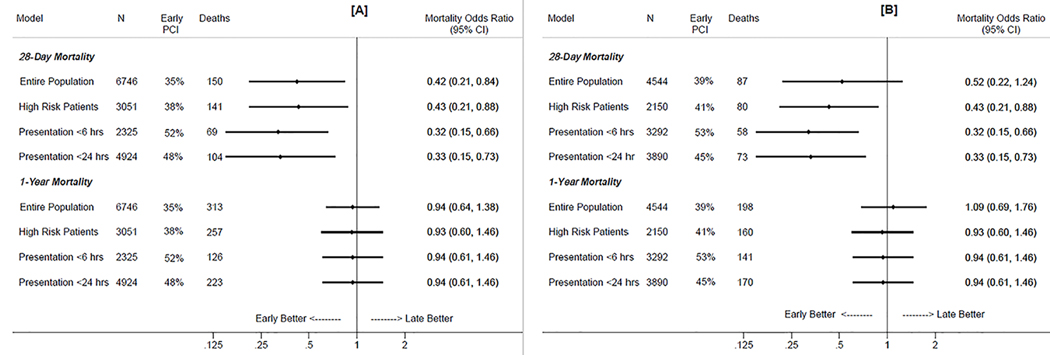Figure 2:
Adjusted mortality odds ratios* of early (<24 hours after symptom onset) relative to late (≥24 hours after symptom onset) percutaneous revascularization in patients hospitalized with non ST-segment myocardial infarction (NSTEMI). The Atherosclerosis Risk in Communities (ARIC) Surveillance Study, 1987–2012 (2a), and subset of the ARIC Communities Surveillance Study admitted from 2000 –2012 (2b).
*Models adjusted for demographics (age, race, sex, calendar year of hospitalization), TIMI risk score, comorbidities (pulmonary edema / congestive heart failure, diabetes, smoking, heart rate, ventricular fibrillation, cardiac arrest, and cardiogenic shock), aspirin use, weekend admission, and transfer status. Models of patients presenting to the hospital <6 and <24 hours of symptom onset are additionally adjusted for time from symptom onset to admission (<1 hour, 1 to <2 hours, 2 to <4 hours, 4 to <6 hours, 6 to <12 hours, and 12 to <24 hours).

